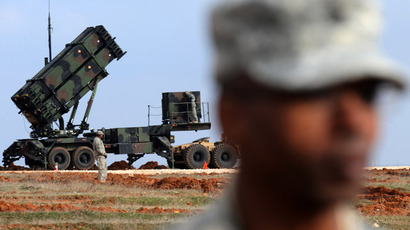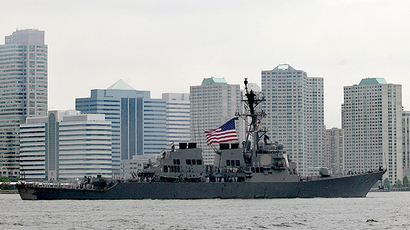US ‘anti-Russian’ missile shield may threaten nuke reduction, officials warn

Moscow believes that the US has intensified its effort to create a Europe-based anti-missile shield and is increasingly certain that it is targeting Russia. If the situation deteriorates, US-Russia nuclear reduction agreements may be at risk.
Russian concerns over the ABM shield, which the US is building in Eastern Europe, claiming that it is meant to stop ballistic missiles from North Korea and Iran, were voiced Tuesday by both the military and diplomats.
“Unfortunately, I have to state that our partners from NATO have effectively rejected any expert dialogue on the antiballistic missile defense issue and substitute it with political slogans,” said Sergey Koshelyev, the head of the Defense Ministry’s department for international military cooperation.
“This situation and the latest statements from the alliance leadership only make us more certain that the ABM system is an anti-Russian capability, which will only grow stronger in time,” he said.

The assertion was echoed by statements from the Foreign Ministry. Russian Deputy FM Sergey Ryabkov said that in Moscow “we feel the symptoms of the work on various segments of the AMD system being intensified… And those symptoms are more frequent that they used to be.”
“This proves our initial concerns that the system in its final form is designed to block not only limited threats, as it was claimed. To a much degree it will be formed, designed and built to try and devalue the Russian strategic nuclear deterrence,” he told RIA Novosti in an interview.
Ryabkov warned that such developments may affect the New START treaty between the US and Russia on nuclear weapons disarmament.
“Fundamental for this treaty is the link between strategic offensive and defensive weapons. So the development of the AMD may in the end affect negatively the prospects of preserving of the treaty,” he said, adding that so far the treaty is strictly observed by both sides and that Moscow has all reasons to believe that its reduction goals will be fulfilled by the 2018 deadline.
The warning comes days after the US rejected the latest Russian proposition on defusing the conflict of the anti-missile system. Russia insists that US should take legally binding obligations not to use the European AMD system to undermine Russia’s nuclear capabilities.
The rejection was expected, especially considering that the US downgraded most lines of cooperation with Russia, except for those beneficial to America, as part of its response to the Ukrainian crisis.
Meanwhile the European AMD system made a new step in mid-April after the US Navy decided to deploy the second generation of the Standard Missile-3 Block IB missile, interceptor projectiles that are part of the antimissile shield.
“The SM-3 Block IB's completion of initial operational testing last year set the stage for a rapid deployment to theater,” said Taylor W. Lawrence, president of Raytheon Missile Systems, the producer of the interceptor missile. “The SM-3's highly successful test performance gives combatant commanders around the world the confidence they need to counter the growing ballistic missile threat.”
The Obama administration scrapped the Bush-era plans for European AMD and replaced it in 2009 with the so-called Phased Adaptive Approach. While initially viewed as a positive sign of possible compromise, in practice the move resulted in US is continuing to develop the system and stonewalling Russia’s objections.














